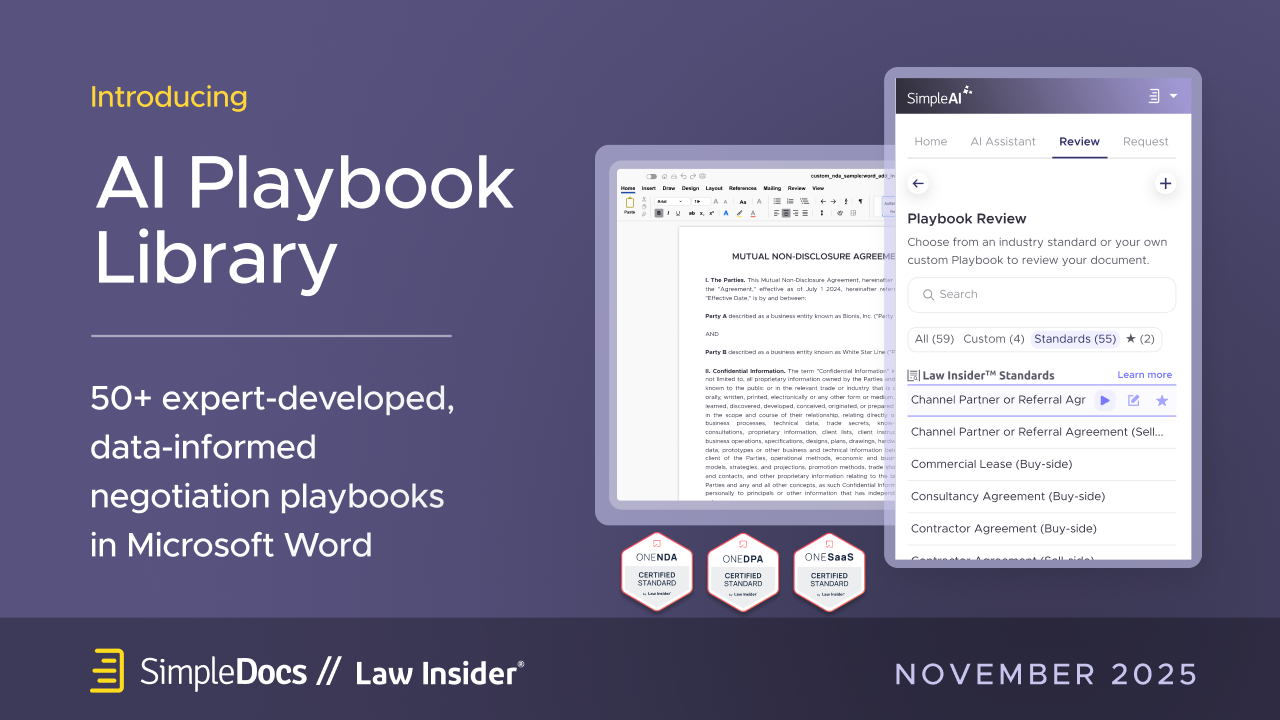Hold up, what’s CLM?
Contract lifecycle management (CLM) tools are the main topic of conversation at any legal tech conference or innovation summit. CLM is the process of managing contracts that organisations might make with their customers, suppliers, partners, or employees. It covers all stages of the contract lifecycle, from creating, executing, post-signature management and storing.
“Modern economies are held together by innumerable contracts” (Quote from the Nobel Prize Award Committee 2016). They are the lifeblood of every organisation and therefore managing them effectively is key to the smooth running of your business.
Up until very recently, most organisations, including enormous, large scale companies managed their contracts rather manually. Excel spreadsheets, sharepoint and Google drives have been used much more than they should have, to manage complex infrastructures and store important data. Tracking rights and obligations, creating alerts on renewals and expiry dates and storing documents that often contain sensitive, privileged information was treated as an afterthought or an expensive manual task carried out by often overqualified, expensive people.
Then the era of CLM software began around 30 years ago. With a predominant focus on contract storage, the first CLM tools were bulky, on-prem solutions and aimed primarily at large enterprise organisations. Things have drastically moved on since then, and with the rise of the cloud and SaaS solutions around 10 years ago, today there are at least 150 CLM tools you can choose from.
But with 77% of CLM projects failing, it is clear that implementing a CLM solution for your organisation is not as simple as it might be made out to be. Contrary to what some tech vendors might tell you, CLM is not plug and play and any CLM implementation project will require time and resource to roll out effectively.
So what do you need to consider before you buy CLM? Choosing from a sea of tools that all look like they more or less do the same thing is confusing at best, dangerous at worst.
Step 1: Discovery and business requirements gathering
Before you even begin to demo any of the CLM tools out there, the first step is to gather your business requirements. To do this effectively, you first need to articulate your objectives.
Some questions you might consider are:
- What is the main purpose for which you’re seeking to buy a CLM?
- Are you looking for somewhere to store your contracts safely, or is it more important for you that you can manage your contracts post-execution so that you never miss another renewal date?
- Are you looking for a tool that will allow the business to self-serve when it comes to creating basic contracts or will your predominant user be Legal?
- Where do you see your contract function in 3-5 years? Is your business looking to grow massively and will you therefore have hundreds of contracts to manage? Or are you in steady-state, looking to optimise the way you manage your contract lifecycle to gain efficiencies and cut costs?
- How will you measure success once it’s been implemented?
Step 2: Stakeholder mapping
Once you’ve articulated your high level objectives and why you are considering CLM, the next step is to map your stakeholders and start speaking with them. Consider the following:
- Who do you need buy-in from in order to make the project a success? Do you have buy-in from IT, Finance and C-suite and any other team who input or influence you’ll need?
- Who will be impacted by the CLM? Whose jobs might change or be affected by the new solution? Who has something to gain? Who might be a blocker?
- Who will project manage the CLM tool implementation internally?
Step 3: No-tech solutions
During Discovery, it is likely that you’ll have uncovered areas that need remediation which technology cannot solve or that you need to solve before you implement technology. Consider doing these first or embedding them as ‘deliverables’ into your overarching CLM project plan.
These might include:
- Updating your templates and playbooks. This is particularly important if one of your requirements is to allow the business to self-serve and for your stakeholders to create their own simple documents like NDAs without involvement from Legal
- Finding your contracts and cleaning them up. Often contracts are not all in one place which is a project that needs completing before you buy expensive CLM licences. Your CLM implementation project will very likely be delayed if your contracts aren’t in order, if your executed and draft copies are all in lumped together and if you don’t have a naming system. If you’re moving to a new CLM solution, ask your existing provider how they will help you export your contracts.
- Process and workflow optimisation. Often, simple tweaks in your processes mean that you don’t need technology to solve a friction point. Try to fix any process issues that can be fixed manually first so you can focus the CLM on the problems that really do need technology to resolve them.
It is important that these areas are addressed separately as digitising a broken or onerous process can in fact perpetuate the problems you’re facing and make it even more difficult to remediate after the technology is live.
Step 4: Scoping
There are a few key areas to consider before you even start demoing tools.
Scope: Define your project scope: are you going to include procurement and sales contracts? Are you going to cover your region only or will this involve other regions as well?
Budget: What is your budget for the implementation of the tool? Have you taken into consideration additional consultancy services (such as TLB) that you may need to support with the roll-out of the tool? What is your budget for ongoing tool costs once it’s been implemented?
Timeline: Do you have a hard deadline for the delivery of the project? When are you hoping to roll out the tool and be up and running with it? Why is the deadline what it is?
Step 5: Demo time
Now that you’ve articulated what you’re looking to accomplish and how you’re going to go about it, it’s time to find a selection of tools to demo. It’s always best to demo at least three solutions so that you can compare. You can use our Legal Tech directory to compare tools (coming soon!).
Reach out to vendors and set up your demos. Take a consistent approach to the way you compare them. Ask probing questions about their capabilities. If you don’t understand something, don’t assume it’s your lack of knowledge or experience in the subject matter, ask for clarity. From experience, it is more often than not the case that clients are disappointed after they’ve bought a tool as it didn’t quite do what they thought it would.
Step 6: Selection, project planning and governance
Once you’ve found the tool for you, consider when you can realistically start implementing the tech. From experience, we’ve found that many clients buy the product and start paying for licence fees immediately, then spend months trying to plan how they’re going to roll it out. Licence fees are wasted and Finance is asking questions about it.
Set out your project team, engage a consultancy like TLB to help you with the end to end project delivery and set out your governance for the project. How will you make sure the right communication lines are in place so that your leadership team and other stakeholders remain informed and engaged and how will you hold other team members accountable for things that your project needs in order to succeed?
Step 7: Kick-off
Once you have your suppliers in place and are ready to kick off your project, make sure you do it with a bang! Create momentum in the business by rolling out an exciting internal campaign that will help the business understand what you’re doing, why you’re doing it, how it will benefit them and what the project needs from them in order to be a success.

.svg)

-min.svg)

